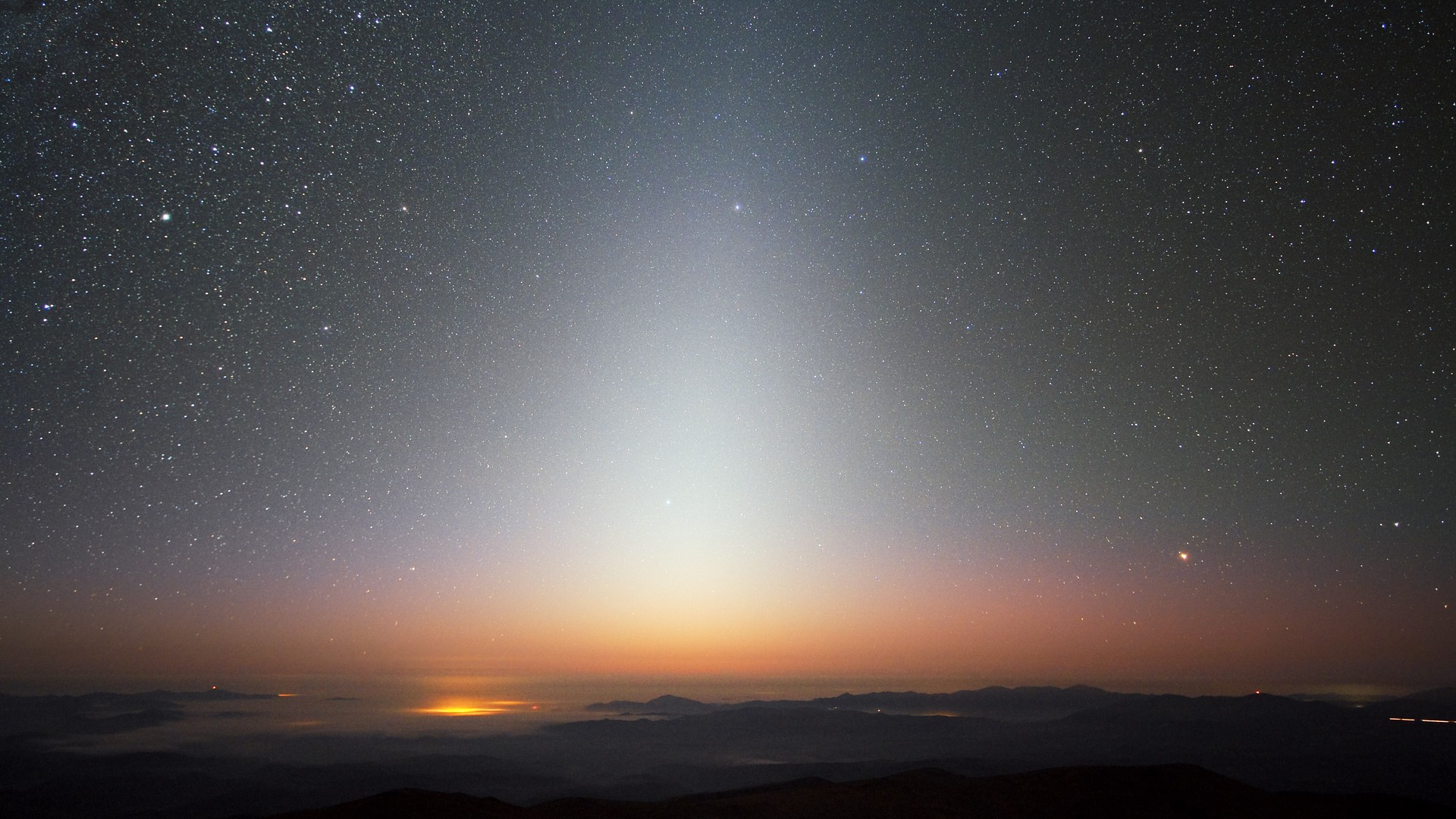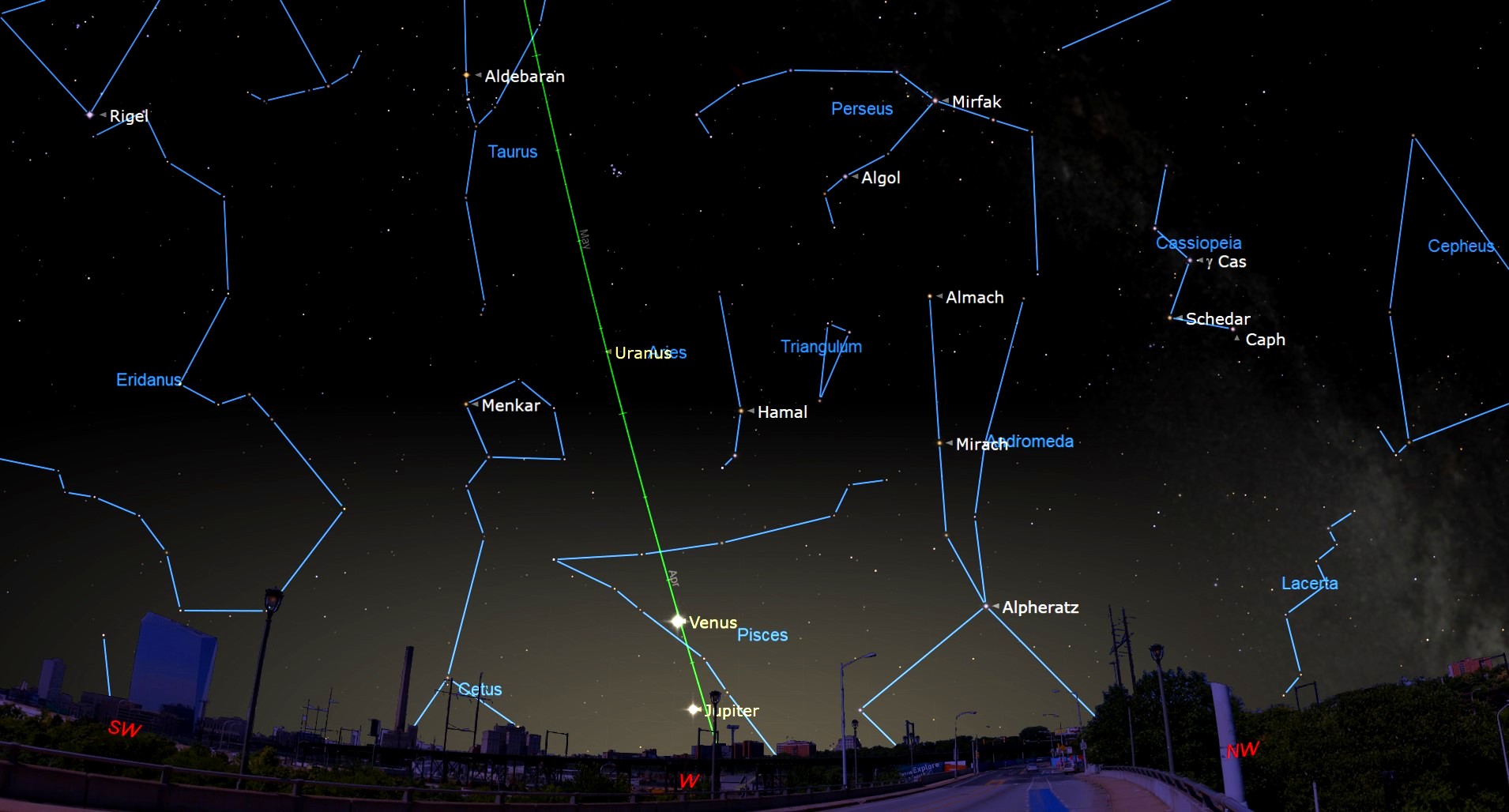See the night sky shine with ghostly zodiacal light this month
Skywatchers will need to plan carefully and find dark skies to catch this almost ethereal pyramid of light after twilight.

For a few weeks starting on Thursday (March 9), skywatchers have the opportunity to catch a glimpse of a ghostly celestial glowing pyramid of light illuminating the night sky over Earth.
This phenomenon, known as zodiacal light, is the result of sunlight being reflected by dust particles between the sun and Earth. Catching the zodiacal light will require a bit of planning. It is so faint that it can only be seen in a dark sky that is clear from light pollution both man-made and natural. If you want to find a dark sky site near you, there are plenty of dark sky maps available online. Furthermore, it is only visible for around 90 minutes beginning around 90 minutes after sunset, just after the evening twilight has disappeared in the west.
Under these circumstances, skywatchers should be able to spot a wedge of light extending from the horizon to the west and following an imaginary eastward line in the sky called the "elliptic" — the apparent path that the sun traces across Earth's sky.
Related: Ghostly glow in alien skies: 'Zodiacal light' possibly spotted on 3 exoplanets

Looking for a telescope to see the features of the full moon up close? We recommend the Celestron Astro Fi 102 as the top pick in our best beginner's telescope guide. Don't forget a moon filter!
The zodiacal light can be followed visually along the ecliptic beginning at around 30 degrees from the sun to about 90 degrees from the star.
Fortunately, the zodiacal light is visible from Thursday (March 9) until March 21, so there is plenty of time to plan to catch it. Also during this time, two of the brightest planets over Earth, Venus, and Jupiter are in the west after sunset, This means that there is a chance to catch these two worlds framed in this celestial light.
Just as its name implies, the celestial glow of zodiacal light appears in the ring of constellations known as the zodiac also found along the elliptic. But, there's nothing supernatural or "otherworldy" about this glow of course and its manifestation is fairly straightforward to explain.
Get the Space.com Newsletter
Breaking space news, the latest updates on rocket launches, skywatching events and more!
Zodiacal light is thought to originate from debris left behind in the solar system from the Jupiter family of comets. These icy bodies are short-period comets with orbits around the sun lasting less than 20 years. They are named after the gas giant because it is the gravitational influence of Jupiter, the largest planet in the solar system, that defines their orbits.

As these comets pass close to the sun, radiation from our star heats them and causes them to shed dust and ice particles which then linger around the sun. This material is commonly seen in the characteristic "tails" that comets grow and the glow that surrounds them, known as the coma. Another source of dust may be collisions between asteroids located in the asteroid belt between Jupiter and Mars.
These dust grains spread around the sun in a flat disk shape that spirals slowly around the star. It shares the same plane as the inner planets: Mercury, Venus, Earth, and Mars. Ranging from around a millimeter to a micron (one ten-thousandth of a centimeter), these particles reflect sunlight that falls on them, creating the zodiacal glow.
If you miss the zodiacal light in these spring evenings, the autumn months over another opportunity to catch it in the Northern Hemisphere. This will require heading out to an area with dark skies before sunrise as this pyramid of light is best seen before dawn from late August to early November.
If you're hoping to catch a look at the zodiacal light glow, our guide for the best binoculars are a great place to start. Low magnification wide-angle binoculars could be a great tool for seeing zodiacal light. If you want to zoom in on smaller objects in the night sky, check out our guide for the best telescopes.
And if you're looking to snap photos of this phenomenon of the night sky in general, check out our guide on how to photograph the moon, as well as our best cameras for astrophotography and best lenses for astrophotography.
Editor's Note: If you snap the zodiacal light and would like to share it with Space.com's readers, send your photo(s), comments, and your name and location to spacephotos@space.com.
Follow us @Spacedotcom, or on Facebook and Instagram.
Join our Space Forums to keep talking space on the latest missions, night sky and more! And if you have a news tip, correction or comment, let us know at: community@space.com.

Robert Lea is a science journalist in the U.K. whose articles have been published in Physics World, New Scientist, Astronomy Magazine, All About Space, Newsweek and ZME Science. He also writes about science communication for Elsevier and the European Journal of Physics. Rob holds a bachelor of science degree in physics and astronomy from the U.K.’s Open University. Follow him on Twitter @sciencef1rst.









